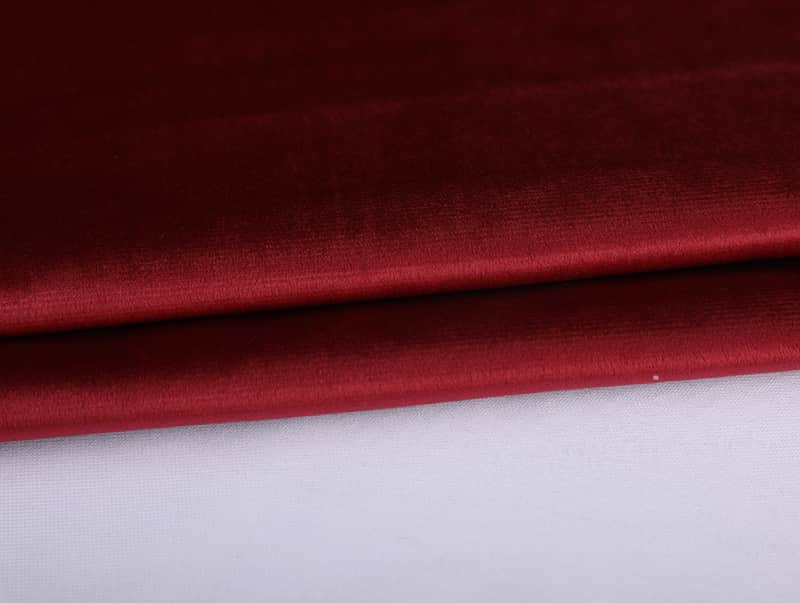The draping quality of silk velvet and polyester velvet for curtains varies significantly due to the inherent properties of the fibers. Here's a breakdown of the key differences in their draping qualities:
Softness and Luxurious Feel:
Silk Velvet: Silk velvet is renowned for its exceptional softness and smooth, luxurious feel. It drapes beautifully, with a fluid and rich texture that creates an elegant, high-end look. The natural fibers in silk give it a graceful, flowing drape that enhances the opulence of the curtains.
Polyester Velvet: Polyester velvet is typically less soft than silk velvet, with a slightly more structured or stiff feel. While modern synthetic velvet can be quite soft, it doesn’t achieve the same level of natural softness and fluidity as silk. The drape of polyester velvet is still quite attractive but may appear less fluid and more defined.
Weight and Density:
Silk Velvet: Silk velvet tends to be lighter than polyester velvet, which contributes to a more delicate and flowing drape. The lightweight nature of silk velvet allows the fabric to move more naturally, giving it an ethereal and soft fall when used as curtains.
Polyester Velvet: Polyester velvet is often denser and heavier, which can make the drapes hang with a more structured, substantial feel. While this can give a rich and luxurious appearance, the fabric tends to create more rigid folds and may not move as fluidly as silk velvet.
Drape and Fall:
Silk Velvet: The natural fibers in silk velvet have a smooth, flexible structure that allows for a more relaxed and fluid drape. It folds gracefully and has a light, airy fall, ideal for creating luxurious, billowy curtains that move gently in the breeze.
Polyester Velvet: Polyester velvet often results in a more defined, slightly stiffer drape. The fabric doesn’t gather or fall quite as softly as silk velvet, which can be desirable for curtains that need more structure or a tailored look. Polyester velvet can still produce elegant folds, but it generally lacks the fluid movement that silk velvet offers.

Shine and Light Reflection:
Silk Velvet: Silk velvet has a natural sheen that enhances its drape and gives it a distinctive, iridescent quality when light hits it. This shine adds to the luxurious feel of the fabric and makes it especially suitable for high-end interiors where light reflection plays a role in the room’s ambiance.
Polyester Velvet: Polyester velvet can also have a shiny finish, but it typically does not achieve the same depth and luster as silk. The shine tends to be more consistent and less dynamic, which can result in a more uniform drape without the varying light reflections that make silk velvet so striking.
Wrinkle Resistance:
Silk Velvet: Silk is a delicate natural fiber and is more prone to wrinkling than polyester. While it can still be carefully steamed or pressed to remove wrinkles, silk velvet curtains may require more maintenance to retain their perfect drape over time.
Polyester Velvet: Polyester velvet is generally more wrinkle-resistant and can maintain its smooth drape even with less frequent care. It’s more forgiving in environments where the curtains are often adjusted or moved.
Durability and Long-Term Draping:
Silk Velvet: Silk velvet, while luxurious, is less durable than polyester velvet, especially in high-traffic areas. Over time, the fabric may lose some of its smooth draping quality if not properly cared for, and it can become more prone to damage from sunlight or friction.
Polyester Velvet: Polyester velvet is highly durable and retains its draping quality for a longer period with less maintenance. It’s more resistant to fading, abrasion, and environmental factors, making it a more practical choice for long-lasting draping, particularly in areas exposed to sunlight or heavy use.
Effect on Room Aesthetic:
Silk Velvet: The draping of silk velvet creates an inherently elegant, soft, and high-end atmosphere. Its flowing, graceful nature contributes to an air of luxury, making it ideal for more formal, opulent settings or spaces where a soft, billowy look is desired.
Polyester Velvet: Polyester velvet offers a slightly more structured and polished aesthetic. Its draping, though still attractive, tends to be more tailored and less soft. This makes it suitable for contemporary or more formal settings where a crisp, neat look is preferred, or in environments where durability is a priority.











